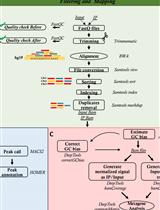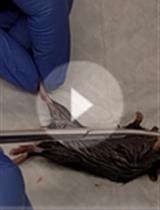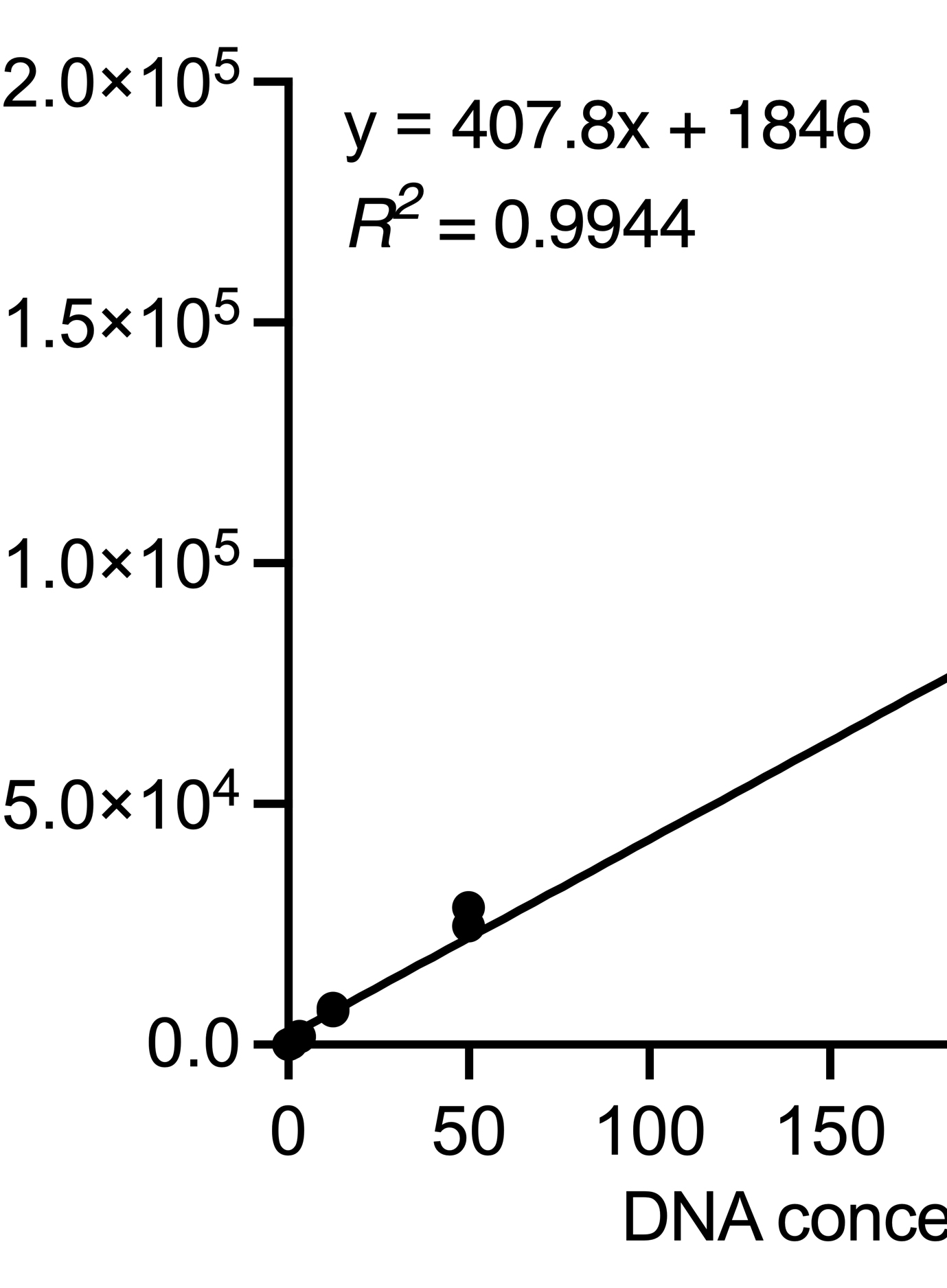- EN - English
- CN - 中文
DNase I Chromatin Accessibility Analysis
DNaseⅠ染色质可及性分析
发布: 2019年12月05日第9卷第23期 DOI: 10.21769/BioProtoc.3444 浏览次数: 5573
评审: Alka MehraAswad KhadilkarManasi K. Mayekar

相关实验方案

利用OxiDIP-Seq方法对含8-氧代-2′-脱氧鸟苷的受损DNA进行全基因组图谱分析
Francesca Gorini [...] Stefano Amente
2022年11月05日 2690 阅读
Abstract
Chromatin consists of compacted DNA in complex with proteins and contributes to the organization of DNA and its stability. Furthermore, chromatin plays key roles in regulating cellular processes such as DNA replication, transcription, DNA repair, and mitosis. Chromatin assumes more compact (inaccessible) or decondensed (accessible) conformations depending on the function that is being supported in the genome, either locally or globally. The activity of nucleases has been used previously to assess the accessibility of specific genomic regions in vitro, such as origins of replication at varying points in the cell cycle. Here, we provide an assay to determine the accessibility of specific human genomic regions (example used herein: Lamin B2 origin of DNA replication) by measuring the effect of DNase I nuclease on qPCR signal from the studied site. This assay provides a powerful method to interrogate the molecular mechanisms that regulate chromatin accessibility, and how these processes affect various cellular functions involving the human genome that require manipulation of chromatin conformation.
Keywords: Chromatin access (染色质通道)Background
Studies aiming to elucidate the molecular underpinnings of genomic processes influenced by chromatin have utilized nuclease sensitivity to assess the accessibility of chromatin. This is a powerful concept for interrogating the regulation and timing of chromatin conformational changes that contribute to cellular processes such as DNA replication and transcription. For example, it has been shown that chromatin is more sensitive to micrococcal nuclease at two distinct sites within the regions encompassing origins of DNA replication in Chinese hamster ovary cells during G1 versus S-phase, suggesting that chromatin is more accessible at these origins in G1 phase (Pemov et al., 1998). However, the approach used in this latter study required laborious techniques, Southern blotting, large-scale and complex genomic DNA collections and restriction digests, and cumbersome gel-electrophoresis and membrane-transfer methods. In addition, the ability to interpret the results was limited, and only allowed one to observe changes to a single site in a larger locus, with no other changes in nuclease (chromatin) accessibility being detectable throughout the region. Older more classical techniques, such as nuclease-protection footprinting assays, can give more insight into specific loci in terms of chromatin changes. For example, the positioning or rearranging of nucleosomes can be detected by such techniques in a small region. However, these footprinting techniques also require laborious methods by the investigator, and are not amenable to asking questions regarding large-scale changes to chromatin accessibility in specific regions of interest in the genome.
To overcome many of the limitations of older techniques, our group developed a more simple and efficient method of detecting differences in large-scale chromatin accessibility for any site in the genome that an investigator wishes to assess. Our approach relies on the accessibility of DNase I to perform an initial limited digestion of genomic DNA in the context of chromatin prior to using such DNA as a substrate for an efficient quantitative real-time PCR (qPCR) analysis. No radioactivity or cumbersome gel-electrophoretic methods are required, and isolation of chromatin/DNA for nuclease digestion is straightforward. Analysis is not complicated, and the results are obtained using the rationale that the more DNase I can pre-digest the chromatin/DNA sample, the less substrate DNA there will be for qPCR relative to chromatin/DNA not exposed to DNase I (total uncut DNA). Less substrate DNA due to DNAse I digestion will require more PCR cycles to amplify, and this will be interpreted as indicating that the chromatin was more accessible for nuclease digestion. The investigator can manipulate the cells using various methods prior to isolating chromatin, allowing quick and efficient quantitative comparisons of chromatin accessibility changes to a specific region under different experimental conditions. The main limitations of our approach are knowing the genomic DNA sequences of the region under investigation, for primer design, and access to a real-time PCR machine.
In practice, our group has used this DNase I chromatin accessibility technique to assess changes at the human Lamin B2 origin of DNA replication in multiple studies. We demonstrated that chromatin at this origin was less accessible to DNase I (more condensed) in S phase (Wong et al., 2010) or in the absence of endogenous Myc protein specifically in late-G1 (Nepon-Sixt et al., 2019), since the qPCR signal from the Lamin B2 origin increased (required fewer cycles) under both of these conditions. While this assay has been utilized to determine chromatin accessibility at a specific origin of mammalian DNA replication under various conditions, chromatin accessibility at other genomic sites (e.g., promoters) can be evaluated by using suitable primers during qPCR designed against other sites of interest.
Materials and Reagents
- Tissue culture plates (Sarstedt, catalog number: 83.3902)
- Cell lifter (Fisher, catalog number: 8100240)
- Microtubes (Axygen, catalog number: MCT-150-C)
- Multiplate PCR Plates, 96-well, clear (Bio-Rad, catalog number: MLL9601)
- Microseal ‘B’ seal Seals (Bio-Rad, catalog number: MSB1001)
- Human cell line (e.g., HaCaT–immortalized human keratinocytes)
- Appropriate tissue culture medium (e.g., Dulbecco’s modification of Eagle’s medium + 10% fetal bovine serum)
- Aprotinin (Fisher, catalog number: 61-637-010MG)
- Leupeptin (Fisher, catalog number: 50550413)
- PMSF (RPI Corp., catalog number: P20270-5.0)
- DNase I Enzyme (Promega, catalog number: M610A)
- EDTA (Fisher, catalog number: BP120-500)
- EGTA (Calbiochem, catalog number: 4100-50GM)
- SDS (Sigma-Aldrich, catalog number: L5750-5KG)
- NaCl (Fisher, catalog number: BP358-10)
- RNase A (Sigma-Aldrich, catalog number: R4875-100MG)
- Proteinase K (Fisher, catalog number: BP1700-100)
- Sterile deionized H2O
- Chloroform (Fisher, catalog number: C298-500)
- EtOH (Pharmco-Aaper, catalog number: 111ACS200)
- 5x Colorless GoTaq Reaction Buffer (Promega, catalog number: M792A)
- 10 mM dNTPs (Promega, catalog number: U151B)
- GoTaq DNA Polymerase (Promega, catalog number: M300B)
- Forward Primer (see Procedure)
- Reverse Primer (see Procedure)
- FAM-labeled probe (see Procedure)
- KCl (Fisher, catalog number: P217-500)
- Na2HPO4 (Fisher, catalog number: S374-500)
- KH2PO4 (Fisher, catalog number: P285-500)
- NaOH (Fisher, catalog number: BP359-500)
- MgCl2 (Sigma-Aldrich, catalog number: M0250-1KG)
- CaCl2 (Fisher, catalog number: BP510-500)
- Sucrose (Fisher, catalog number: BP220-1)
- Triton X-100 (Fisher, catalog number: BP151-100)
- Phenol crystals (Fisher, catalog number: A92-100)
- 8-hydroxyquinoline (Fisher, catalog number: AC121900250)
- Tris Base (Fisher, catalog number: BP152-5)
- 1x PBS Solution, kept in 4 °C fridge (called ice cold) (see Recipes)
- Lysis Buffer (see Recipes)
- DNase Buffer (see Recipes)
- Tris-saturated Phenol (see Recipes)
- TE Buffer (see Recipes)
Equipment
- Pipettes (VWR)
- Centrifuge (Eppendorf mini-centrifuge, model: 5424, catalog number: 022620401)
Note: All “rpm” listed below also include RCF in g, for those who need to convert for use in a different model of centrifuge. - Isotemp Water Bath (Fisher, catalog number: 2223)
- Bioruptor 300 Plus Sonication Device w/ Water cooler system (Diagenode, catalog numbers: B01020001 and B02010003)
- CFX96 Real-Time PCR Detection System including C1000 Thermal Cycler Chassis (Bio-Rad, catalog number: 185-5096)
- Autoclave (Steris, model: SG-120 Scientific Gravity Sterilizer)
Software
- MS Excel for Mac 2011 Version 14.6.0
- CFX Manager Version 3.1 (Bio-Rad, catalog number: 184-5000)
Procedure
文章信息
版权信息
© 2019 The Authors; exclusive licensee Bio-protocol LLC.
如何引用
Nepon-Sixt, B. S. and Alexandrow, M. G. (2019). DNase I Chromatin Accessibility Analysis. Bio-protocol 9(23): e3444. DOI: 10.21769/BioProtoc.3444.
分类
癌症生物学 > 瘤形成 > 离体组织培养模型
分子生物学 > DNA > 染色质可接近性
分子生物学 > DNA > DNA 定量
您对这篇实验方法有问题吗?
在此处发布您的问题,我们将邀请本文作者来回答。同时,我们会将您的问题发布到Bio-protocol Exchange,以便寻求社区成员的帮助。
提问指南
+ 问题描述
写下详细的问题描述,包括所有有助于他人回答您问题的信息(例如实验过程、条件和相关图像等)。
Share
Bluesky
X
Copy link











